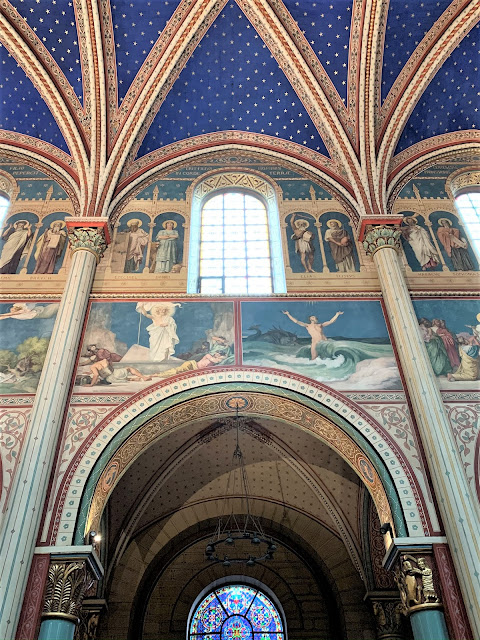[This post is the last post of Year 4. Thanks for following the blog. After a hiatus, the blog will return for Year 5.]
What is the most beautiful church in Paris?
Many people, including us, think Sainte-Chapelle is the most beautiful church in Paris.
What makes Sainte-Chapelle so beautiful are its stained-glass windows. We attended a concert here several years ago, and we were enthralled by the magical, bejeweled setting as we listened to Vivaldi's "Four Seasons."
Saint-Chapelle was completed in 1248 in the Gothic style. Unlike Romanesque churches before, Gothic churches benefited from improved construction techniques that allowed churches to have tall, thin walls with many windows.
Saint-Chapelle is a wonderful example of the Gothic style. Its numerous tall windows allow the sun to light the windows and illuminate the church's interior with warm colors.
Sainte-Chapelle was commissioned by French King Louis IX, known as Saint Louis, to house a collection of relics of the Passion. The most valuable relic was the crown of thorns, which was housed in this chapel until it was later moved to Notre Dame. (When the huge fire recently broke out in Notre Dame, the superintendent and a corps of brave firefighters rescued the crown of thorns and it was not destroyed.) The church was built next to Louis IX's palace on the Île de la Cité.
Sainte-Chapel is also beautiful because nearly every surface is painted or decorated in some way. For example, the ceiling of the lower lower chapel is colorfully decorated.
Below are more examples of the church's ornate or polychrome decoration.
| Entry to the upper chapel |
Thanks for visiting the Saint-Chapelle with us.

















